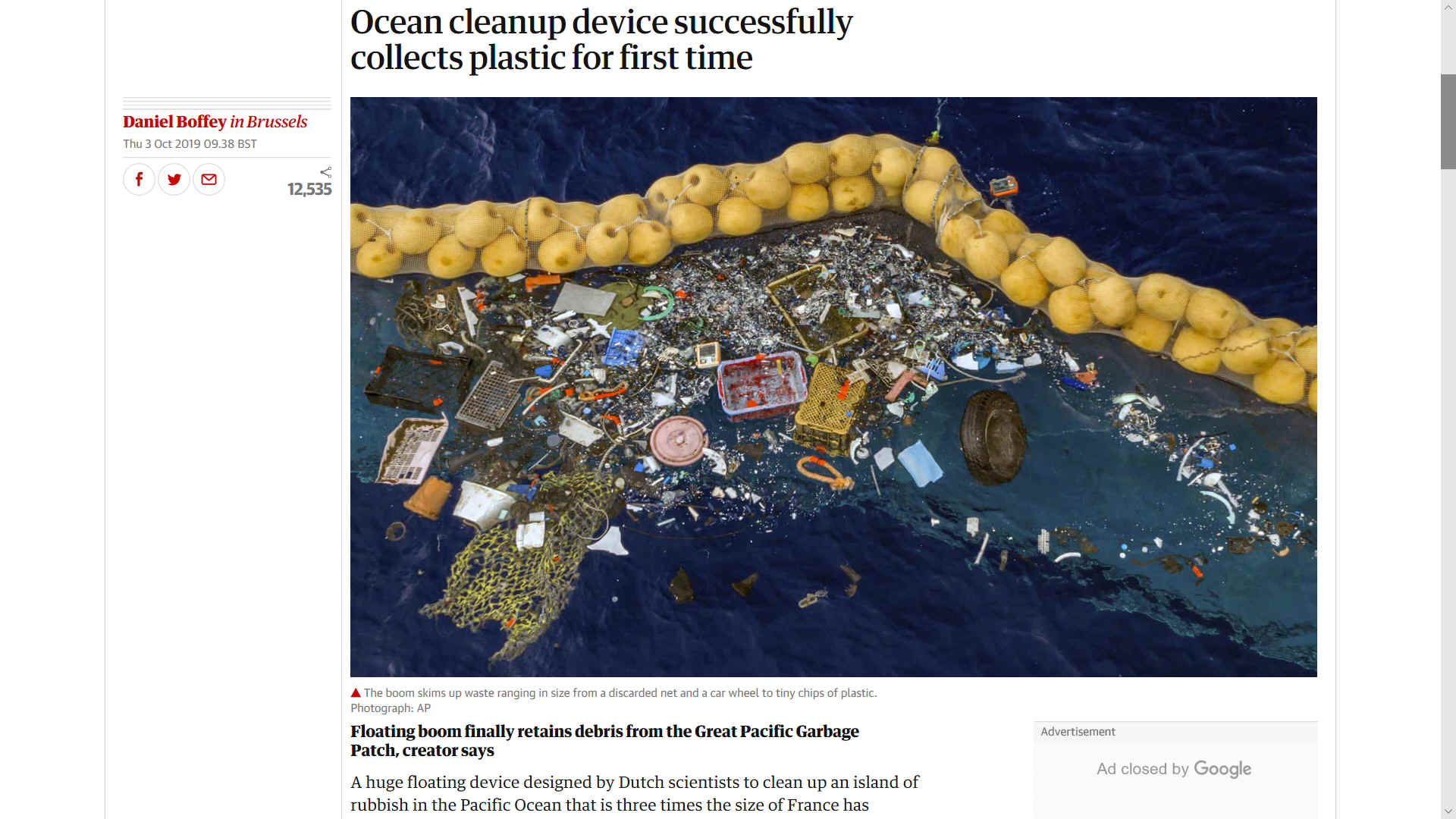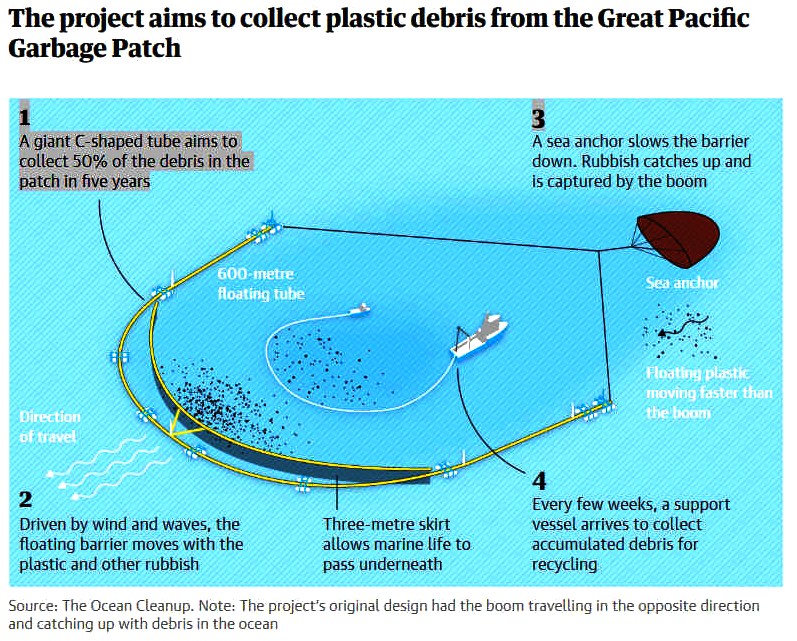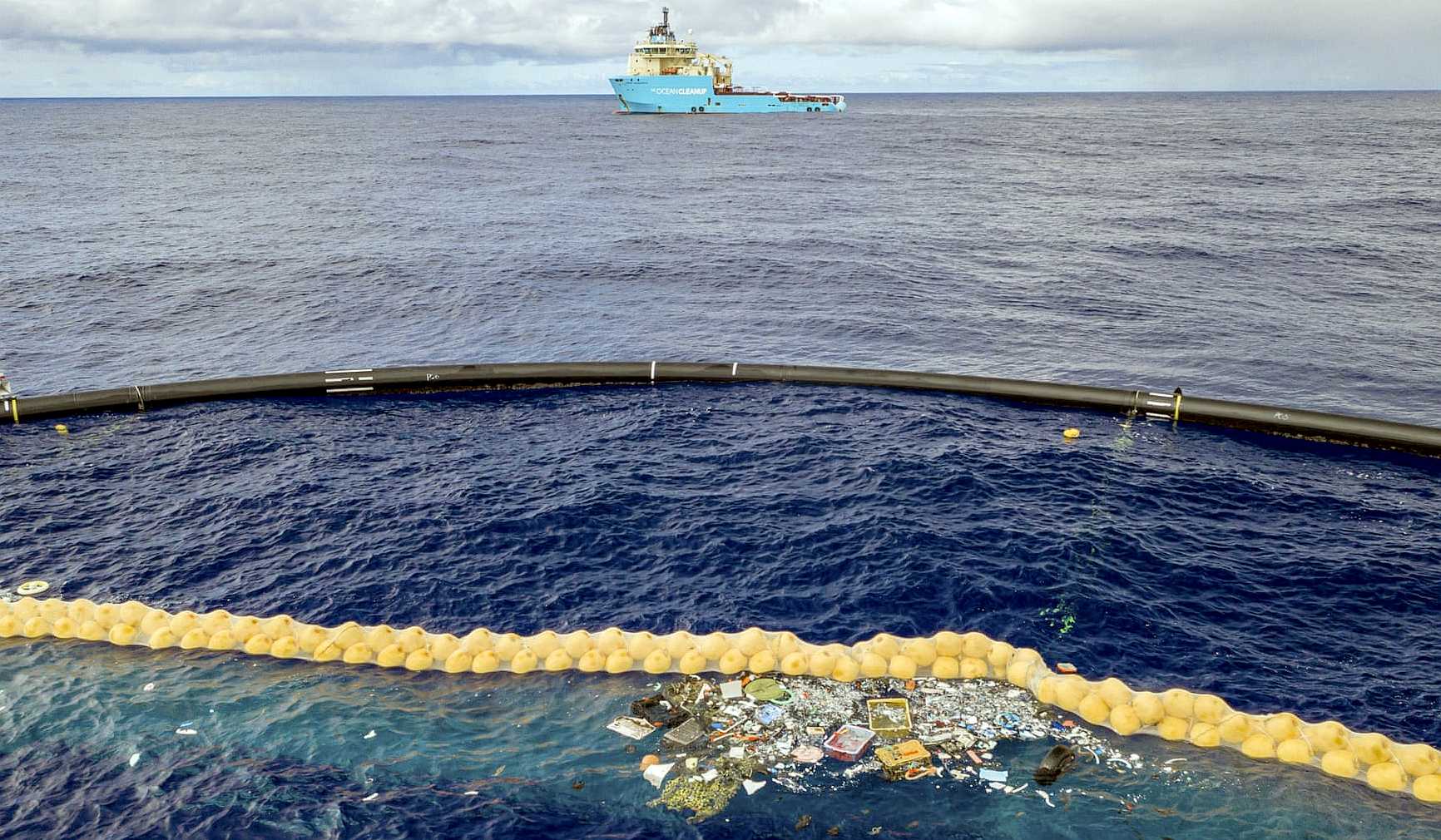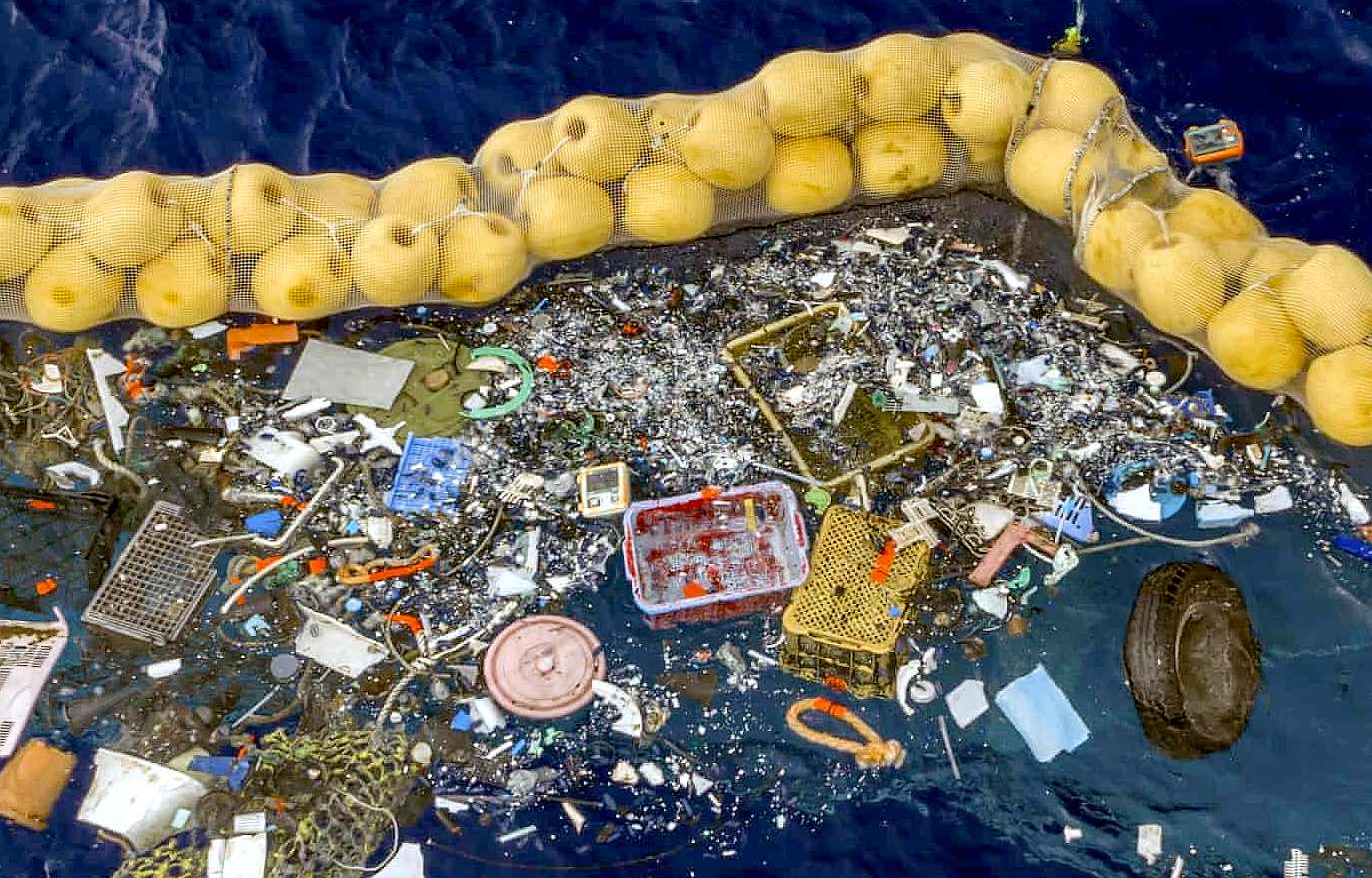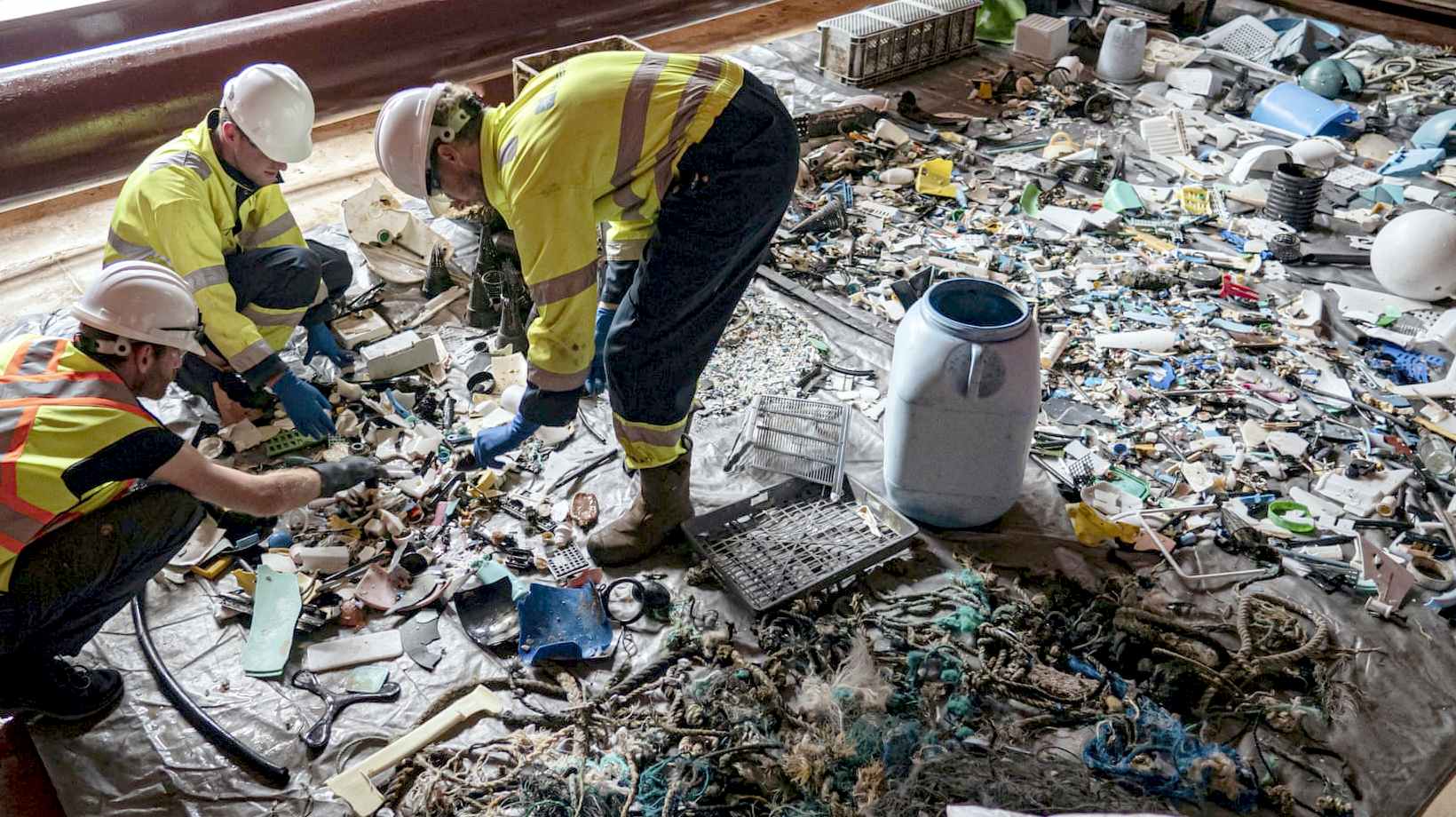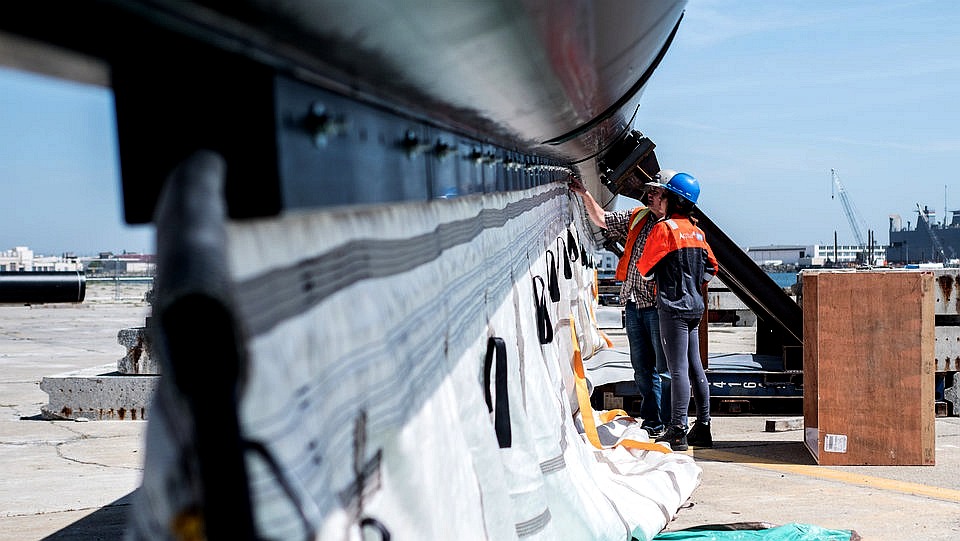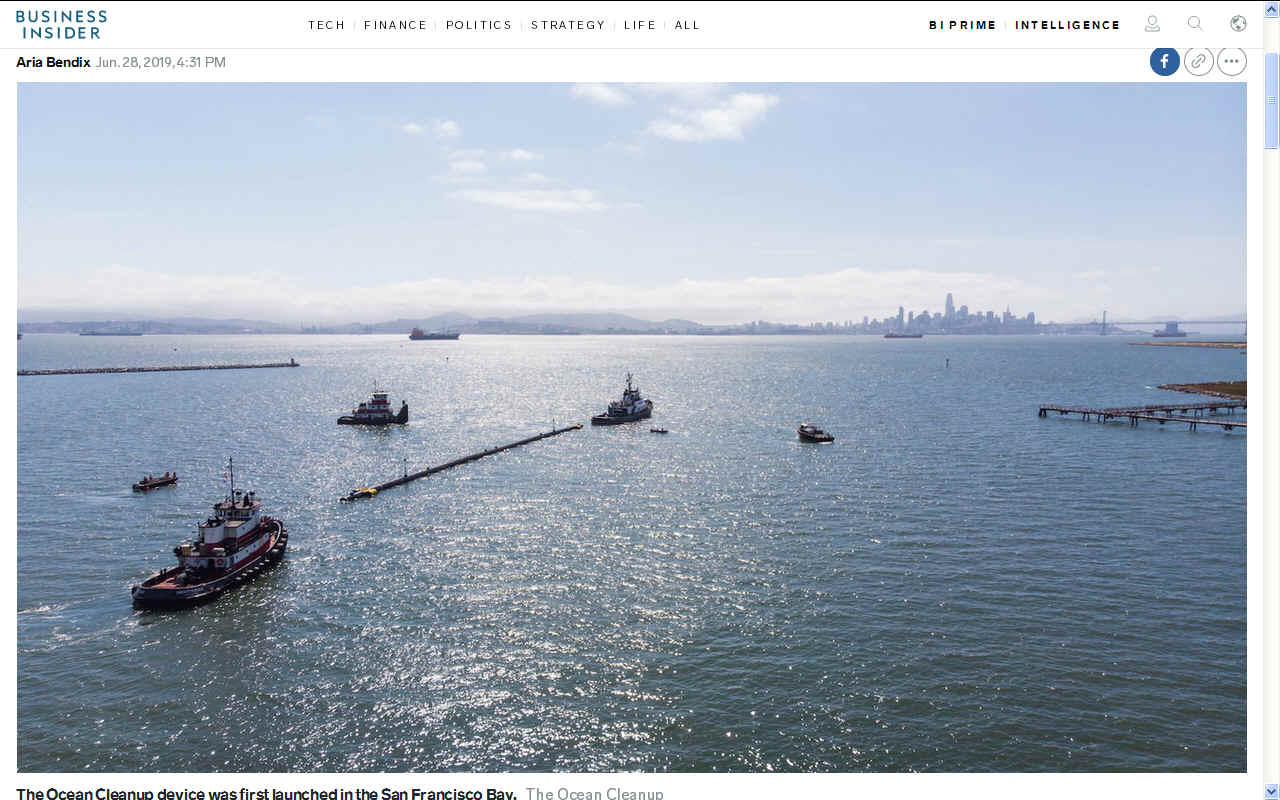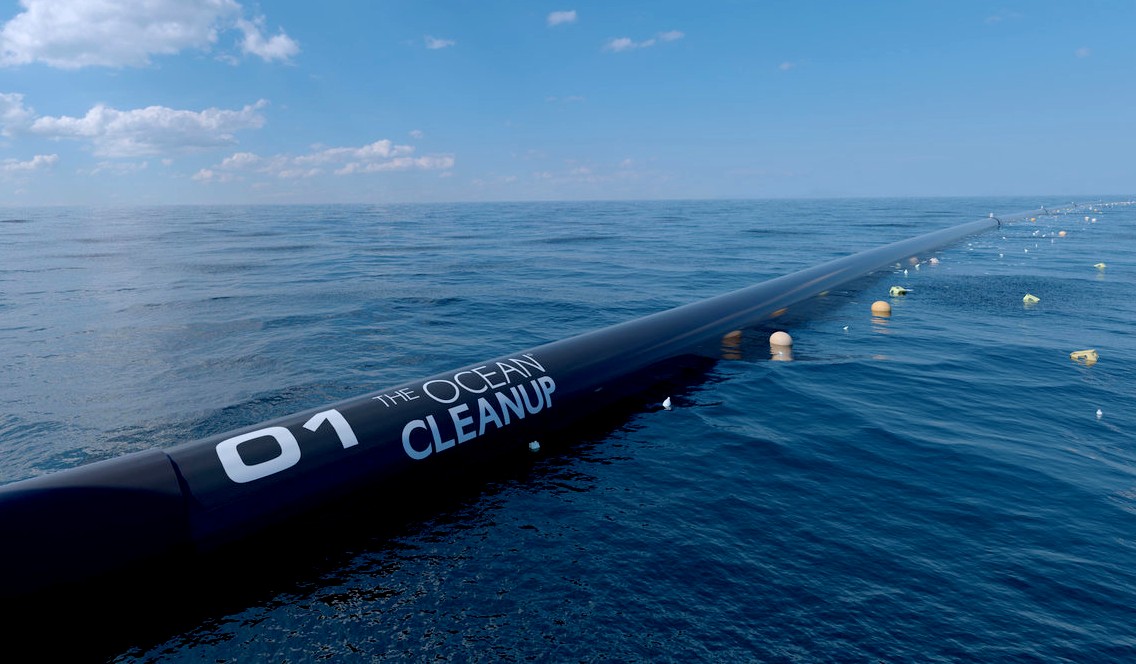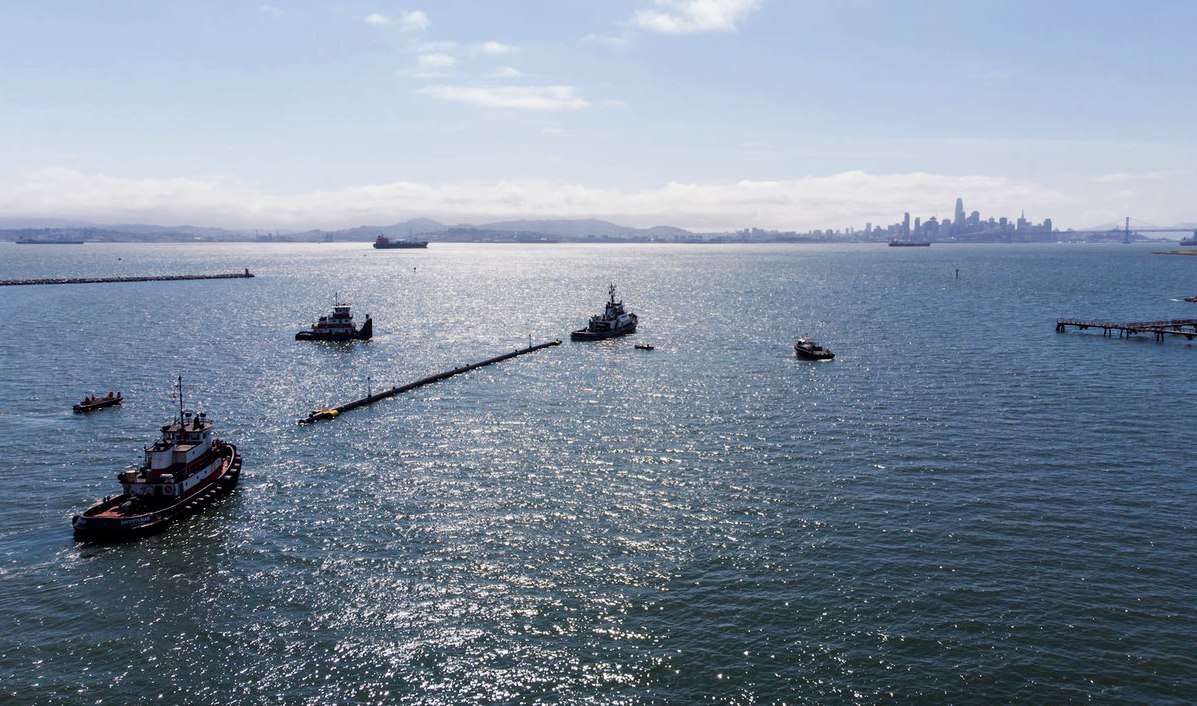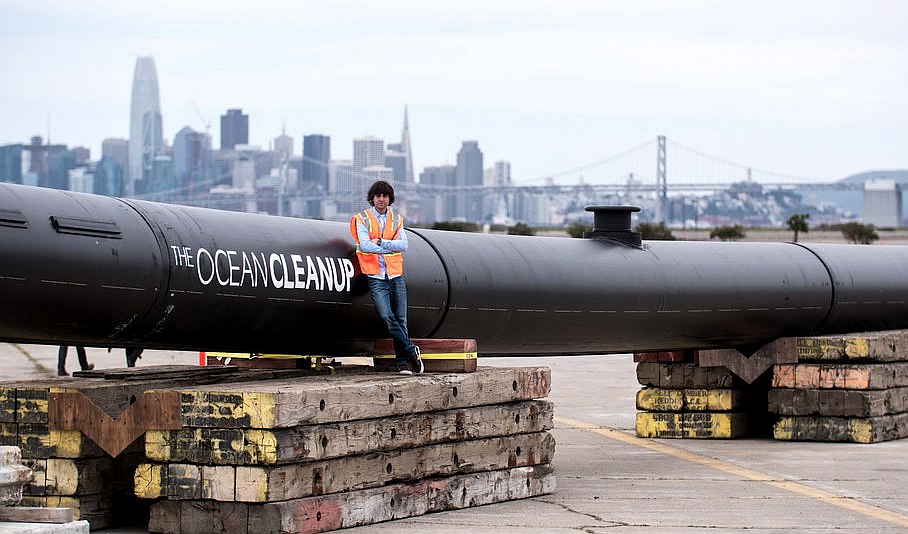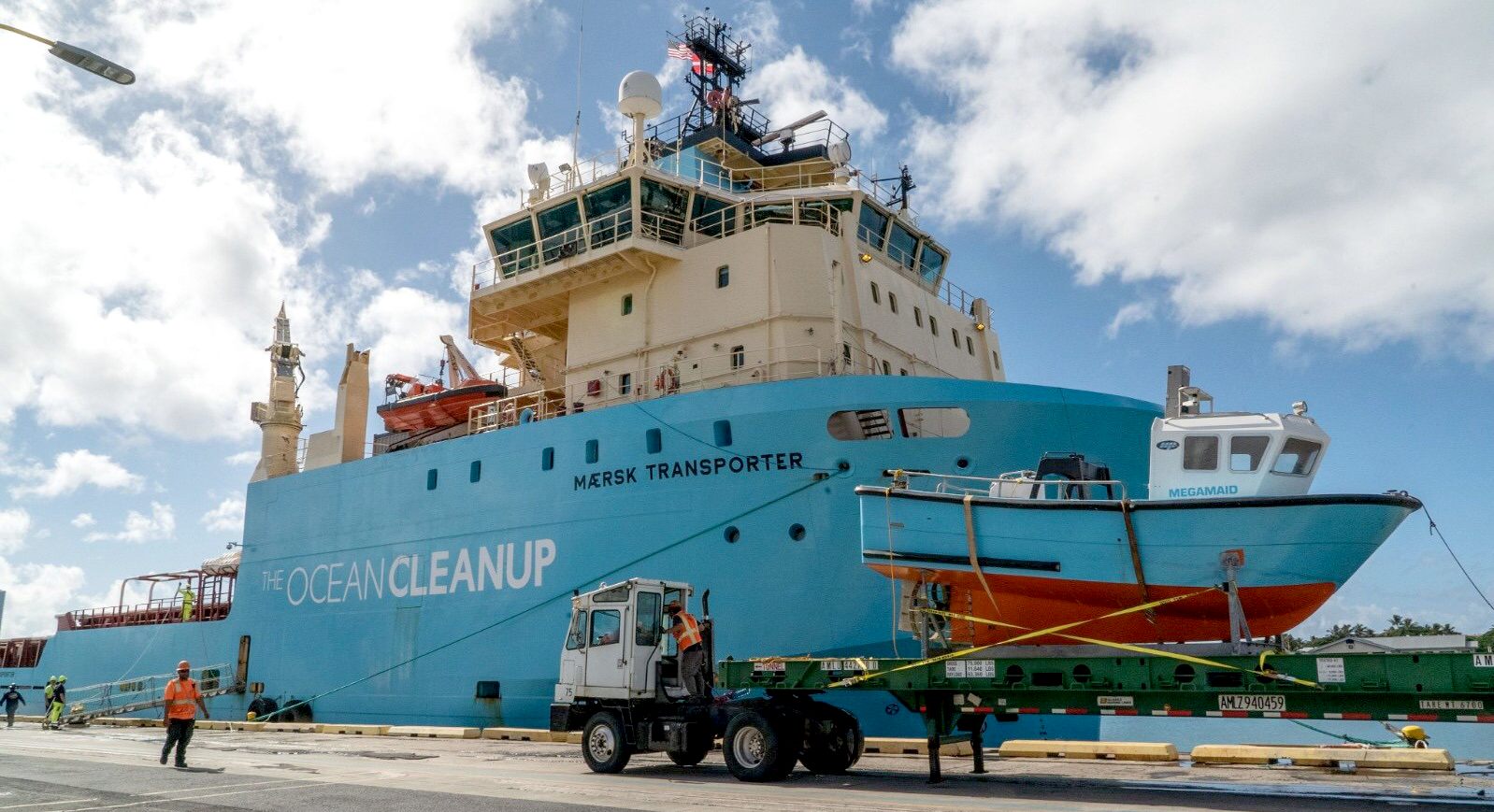|
2019 THE OCEAN CLEANUP PROJECTS
PLEASE USE OUR A-Z INDEX TO NAVIGATE THIS SITE
|
||
MICRO PLASTICS - Having stated in studies that the boom system would not pick up micro plastics, the Ocean Cleanup Project are now saying it does. Confusing at best, we wonder what percentage of the haul is micro particles. If it is significant, or just incidental. This news is incredibly important to other developers, who may as a result of such statements, think that the problem is solved, when in fact the numbers don't add up. For this reason we need to know exactly what the position is with some detail.
THE GUARDIAN OCTOBER 2 2019
- Ocean cleanup device successfully collects plastic for first time
A huge floating device designed by Dutch scientists to clean up an island of rubbish in the Pacific Ocean that is three times the size of France has successfully picked up plastic from the high seas for the first time.
Boyan Slat, the creator of the Ocean Cleanup project, tweeted that the 600 metre-long (2,000ft) free-floating boom had captured and retained debris from what is known as the Great Pacific Garbage Patch.
About 600,000 to 800,000 metric tonnes of fishing gear is abandoned or lost at sea each year. Another 8m tonnes of plastic waste flows in from beaches.
Ocean currents have brought a vast patch of such detritus together halfway between Hawaii and California, where it is kept in rough formation by an ocean gyre, a whirlpool of currents. It is the largest accumulation of plastic in the world’s oceans.
The plastic barrier floating on the surface of the sea has a three metre-deep (10ft) screen below it, which is intended to trap some of the 1.8tn pieces of plastic without disturbing the marine life below.
He said: “We are now catching plastics … After beginning this journey seven years ago, this first year of testing in the unforgivable environment of the high seas strongly indicates that our vision is attainable and that the beginning of our mission to rid the ocean of plastic garbage, which has accumulated for decades, is within our sights.
“We now have a self-contained system in the Great Pacific Garbage Patch that is using the natural forces of the ocean to passively catch and concentrate plastics … This now gives us sufficient confidence in the general concept to keep going on this project.”
The plastic gathered so far will be brought to shore in December for recycling. The project believes there may be a premium market for items that have been made using plastic reclaimed from the ocean.
The plan is to now scale up the device and make it more durable so it can retain plastic for up to a year or possibly longer before collection is necessary.
The latest trial began in June when the system was launched into the sea from Vancouver. The project was started in 2013 and its design has undergone several major revisions. It is hoped the final design will be able to clean up half of the debris in the Great Pacific Garbage Patch. By Daniel Boffey (Brussels)
In mid-January 2019, the Wilson system completed its 800-mile journey and arrived in Hilo Bay, Hawaii. Ocean Cleanup planned to return the repaired system to duty by summer. In mid-June, after four months of work, the revamped system (001/B) was redeployed.
The Ocean Cleanup is non-government engineering environmental organization based at Delft, Netherlands, that develops technology to extract plastic pollution from the oceans.
After conducting six expeditions between November 2013 and July 2015, The Ocean Cleanup indeed learned that most plastic lingers near the water's surface. But the process of capturing it turned out to complicated.
In September 2018, the organization launched its first device — a 2,000-foot-long U-shaped array known as "Wilson" — from the San Francisco Bay. More than eight weeks later, Wilson began spilling plastic back into the
Great Pacific Garbage
Patch, and its sensors and satellite system were eventually compromised.
Boyan Slat is not alone in the fight against ocean plastic. These emerging technologies could all play a part in containing the mountain of plastic that is accumulating on the oceans floors, by recovering floating debris before it sinks. New ideas are welcomed.
PROJECT HISTORY 2012 - 2021
2021 - Qualified success Sept 16 (Reuters)
OCEAN CLEANUP PROJECTS
* Aliance to end Plastic Waste * Boyan Slat's ocean booms * 4Ocean recycled plastic bracelets * Seabin * SeaVax autonomous drones
LINKS & REFERENCE
https://www.theguardian.com/environment/2019/oct/03/ocean-cleanup-device-successfully-collects-plastic-for-first-time https://theoceancleanup.com/ 8 September 2018 The World’s First Ocean Cleanup System Launched from San Francisco 22 March 2018 Great Pacific Garbage Patch Growing Rapidly, Study Shows 21 December 2017 Research Shows How Plastic at Sea Turns into Toxic Fish Food 7 June 2017 First Estimate to Quantify Global Plastic Input from Rivers into Oceans 11 May 2017 The Ocean Cleanup Announces Pacific Cleanup to Start in 2018
WIND
AND WAVES
-
The floating boom systems are designed to capture plastics ranging from small pieces just millimeters in size, up to large debris, including massive discarded fishing nets (ghost nets), which can be tens of meters wide.
|
||
|
ABS - BIOMAGNIFICATION - CANCER - CARRIER BAGS - COTTON BUDS - DDT - FISHING NETS HEAVY METALS - MARINE LITTER - MICROBEADS - MICRO PLASTICS - NYLON - OCEAN GYRES - OCEAN WASTE PACKAGING - PCBS - PET - PLASTIC - PLASTICS - POLYCARBONATE - POLYSTYRENE - POLYPROPYLENE - POLYTHENE - POPS PVC - SHOES - SINGLE USE - SOUP - STRAWS - WATER
PLEASE USE OUR A-Z INDEX TO NAVIGATE THIS SITE
|
||
|
This website is provided on a free basis as a public information service. copyright © Cleaner Oceans Foundation Ltd (COFL) (Company No: 4674774) 2019. Solar Studios, BN271RF, United Kingdom. COFL is a company without share capital.
|
